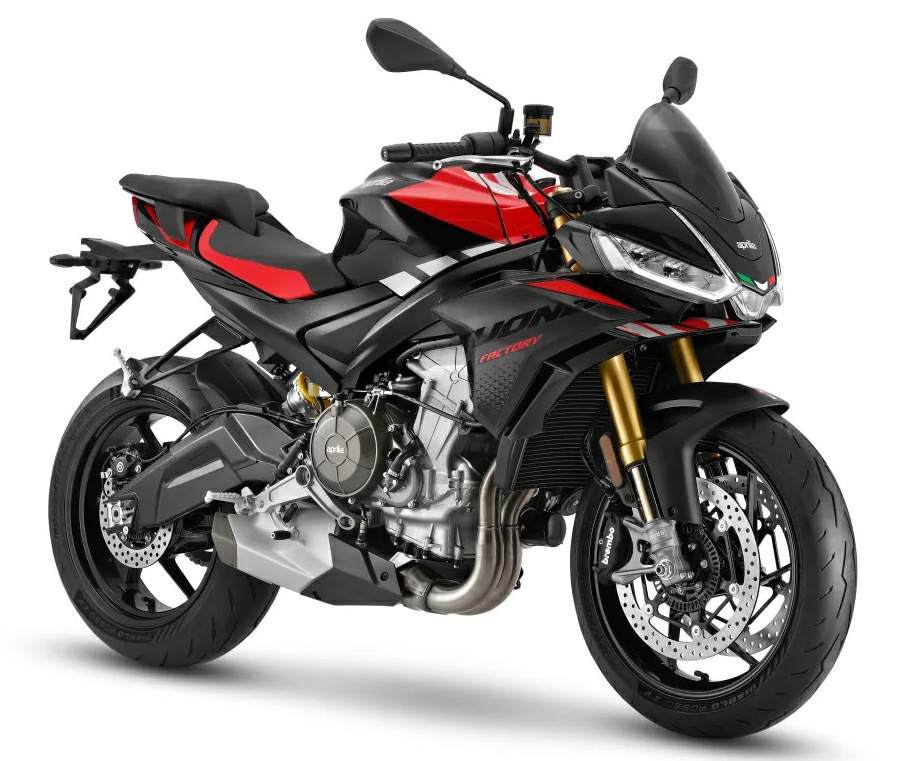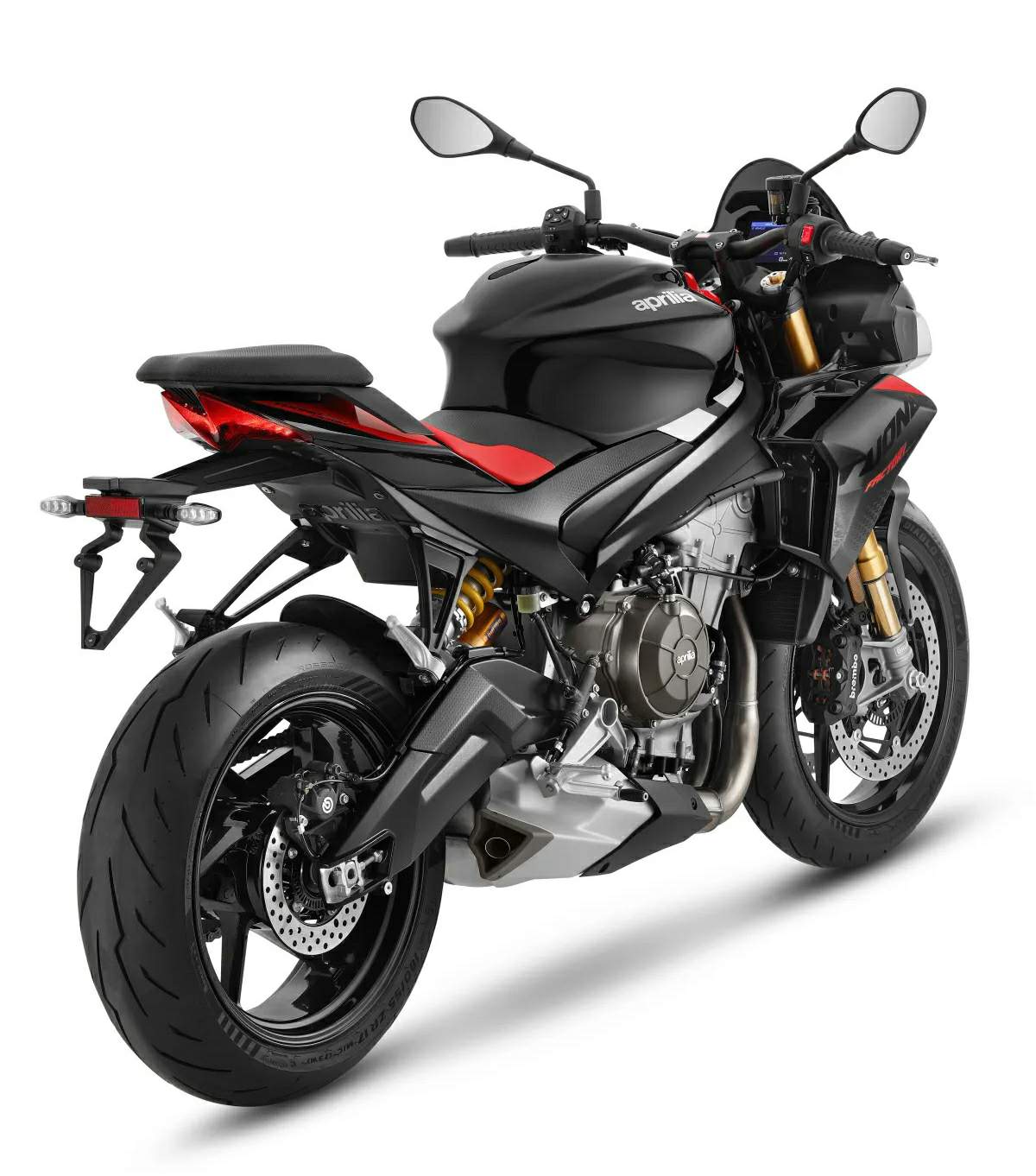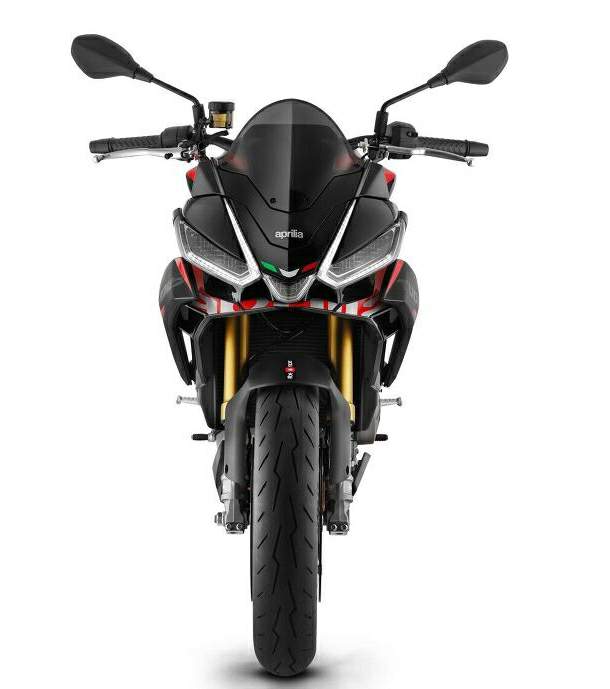
|
|
|
|
|
|
Classic Bikes
Custom Bikes
Individual
Racing Bikes AJP
AJS
Aprilia
Ariel
Avinton / Wakan
Bajaj
Benelli
Beta
Bimota
BMW
Brough Superior
BRP Cam-Am
BSA
Buell / EBR
Bultaco
Cagiva
Campagna
CCM
CF Moto
Combat Motors
Derbi
Deus
Ducati
Excelsior
GASGAS
Ghezzi Brian
Gilera
GIMA
Harley Davidson
Hero
Highland
Honda
Horex
Husaberg
Husqvarna
Hyosung
Indian
Jawa
Kawasaki
KTM
KYMCO
Laverda
Lazareth
Magni
Maico
Mash
Matchless
Mondial
Moto Guzzi
Moto Morini
MV Agusta
MZ / MuZ
NCR
Norton
NSU
Paton
Peugeot
Piaggio
Revival Cycles
Roland Sands
Royal Enfield
Sachs
Sherco
Sunbeam
Suzuki
SWM
SYM
Triumph
TVS
Ural
Velocette
Vespa
Victory
Vincent
VOR
Voxan
Vyrus
Walt Siegl
Walz
Wrenchmonkees
Wunderlich
XTR / Radical
Yamaha
Zero
Video
Technical
Complete Manufacturer List
|
Aprilia Tuono 660 Factory |
| . |
|
Make Model |
Aprilia Tuono 660 Factory |
|
Year |
2025 |
|
Engine |
Four stroke, forward facing parallel twin, DOHC with silent chain drive on the right side, four valves per cylinder |
|
Capacity |
659 cc / 40.2 cu-in |
|
Bore x Stroke |
81 x 63.93 mm |
|
Compression Ratio |
13.5: 1 |
|
Cooling System |
Liquid cooled with radiator and water-oil heat exchanger |
| Lubrication | Wet sump |
|
Exhaust |
Akrapovič - for race use only |
| Emission | Euro 5 + |
|
Induction |
Airbox with front air intake. 2 x 52 mm throttle bodies, Ride-By-Wire management |
|
Electronic Management |
APRC suite that includes ATC (traction control), AWC (wheelie control), AEB (engine brake) AEM (engine mapping), ACC (cruise control) 5 riding modes (Road and Track, 3 pre-set and 2 customizable) |
|
Starting |
Electric |
|
Max Power |
105 hp / 73.5 kW @ 10500 rpm |
|
Max Torque |
68 NM / 50.2 lb-ft @ 8500 rpm |
|
Clutch |
Wet, multi-plate, slipper |
|
Transmission |
6 Speed, Aprilia Quick Shift (AQS) System up and down (available as optional accessory) |
|
Final Drive |
Chain, with drive ratio: 17/43 |
|
Frame |
Twin-spar aluminum half frame |
|
Front Suspension |
43mm Öhlins NIX 30 fork, spring preload, rebound and compression damping adjustable |
|
Front Wheel Travel |
110 mm / 4.3 in |
|
Rear Suspension |
Öhlins STX rear shock, spring preload, rebound and compression damping adjustable |
|
Rear Wheel Travel |
130 mm / 5.1 in |
|
Front Brakes |
2x 320mm Brembo radial calipers with 4 horizontally opposed 32 mm pistons. Radial pump and metal braided brake hose |
|
Rear Brakes |
Single 220mm disc; Brembo caliper with two 34 mm separate pistons. Master cylinder with separate reservoir and metal braided hose Multimap ABS (Cornering ABS available as optional accessory) |
|
ABS System |
ABS Cornering multimap |
| Wheels | Aluminum alloy |
|
Front Wheel |
3.5 x17 |
|
Rear Wheel |
5.5 x17 |
|
Front Tyre |
120/70 ZR 17 |
|
Rear Tyre |
180/55 ZR 17 |
|
Rake |
24.3° |
|
Trail |
104.1 mm / 4.1 in |
|
Wheelbase |
1382 mm / 54.4 in |
|
Seat Height |
822 mm / 32.3 in |
|
Wet Weight |
181 kg / 399 lbs |
|
Fuel Capacity |
15 Litres / 4.0 US gal |
| . |
From a press release issued By Aprilia and its Website:
To be a Factory version means adding that extra level of technological excellence and ultimate riding enjoyment to the already ultra-high standards set by the Tuono 660. More power and less weight for improved performance is accompanied by a comprehensive electronics package and adjustable suspension so that you are always totally in control.
For 2025, the Factory willbe the only Tuono 660 you can buy, with the discontinuation of the entry-level bike.

Light on weight, heavy on performance
The Tuono 660 Factory version benefits from an improved weight-to-power ratio,
the result of a new lightweight lithium battery that contributes to reducing the
overall weight by roughly 2 kg, taking the kerb weight down to 181 kg. Add this
to fully adjustable front and rear suspension and you have an extraordinarily
efficient bike that is hard to resist.

5 Riding Modes
With a choice of 5 Riding Modes, you simply select the one best suited to your
needs or the conditions and voilà, traction and wheelie control, engine braking,
ABS and other parameters are instantly adjusted to optimise your ride.
Standard electronics that are anything but standard
The Tuono 660 Factory comes with a comprehensive package of APRC electronic
controls including Ride-by-Wire acceleration and a six-axis inertial platform.
Other standard features designed to elevate your riding experience are Quick
Shift, Cruise Control, Engine Brake, Traction Control, Engine Map and Wheelie
Control.

Advanced suspension
The factory version of the Tuono 660 sports refined suspension that is ideal for
sports riding. The Sachs shock absorber with separate reservoir is adjustable in
its compression, rebound damping and spring pre-load, while the Kayaba fork is
fully adjustable in the same three parameters.
Cutting-edge braking
The Tuono 660 Factory comes with multi-map cornering ABS, a system with a
specific algorithm behind it that optimises braking and ABS intervention on
corners by constantly monitoring key parameters. These include lateral
acceleration, the pressure applied to the front brake lever, and the lean, pitch
and yaw angle, modulating the braking action in order to improve stability and
deceleration.

|
Any corrections or more information on these motorcycles will be kindly appreciated. |